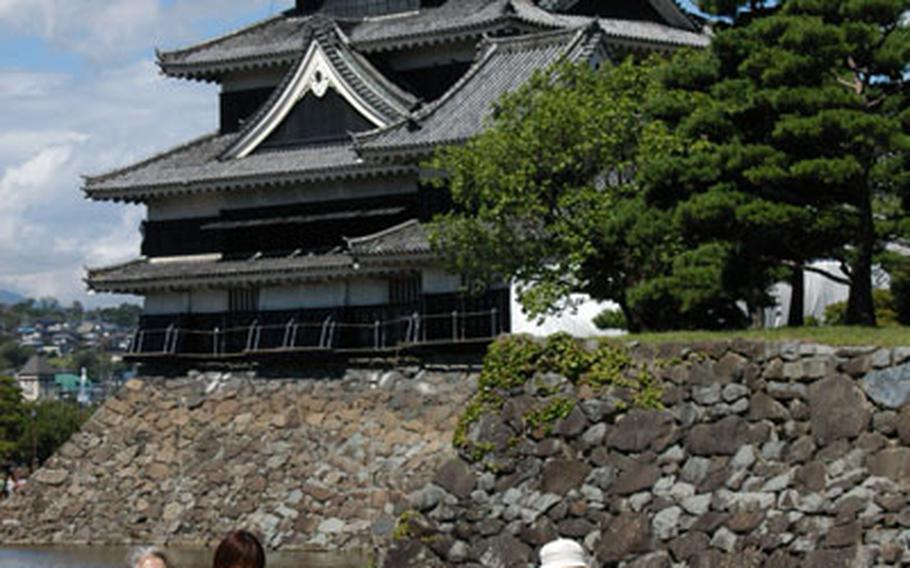
Matsumoto Castle, nestled in a scenic mountain region of Nagano Prefecture, is considered a Japanese national treasure. Built by the Ishikawa clan between 1592 and 1614, it's one of the few great Japanese castles from the feudal era that survives to the present day in its original form. (Vince Little / S&S)
I was born on a military installation in West Germany, visited England two years ago and even walked inside a couple of Saddam’s old palaces during an Iraq deployment. But I’d never seen a genuine castle before.
That changed with a recent trip to Matsumoto Castle, a national treasure nestled in the central Japanese archipelago. It’s in a scenic mountain region of Nagano Prefecture, not far from the site of the 1998 Winter Olympics.
It’s one of the few great Japanese castles from the feudal era that survives to the present day in its original form. The all-wooden construction is perhaps its most unique characteristic.
Built by the Ishikawa clan between 1592 and 1614, the famous castle was designed to survive gunbattles, although none were ever fought there. It featured square gun loopholes, widened toward the inside, for Samurai warriors to maneuver their guns.
The structure also had projecting shelves called “ishotoshi,” constructed at intervals on the first floor for dropping stones on enemies attempting to scale the outside walls.
An assortment of pistols, rifles, ammunition and other weapons — including a mini-cannon — sit on display.
The central fortress, or “donjon,” has five stories and six floors. Short, steep stairwells throughout provide a real test on backs, knees and ankles.
I managed only to reach the third floor. Others tackled more ominous steps to check out higher perches. Centuries ago, the top compartment was reserved as a watchtower.
A 65-yard-wide moat was put around the castle to further discourage invaders. Today, it’s filled with swans, ducks and huge Japanese koi fish that are quite accustomed to being fed by visitors.
Beautiful parks, gardens and trees line the complex, offering a sense of peace and serenity around a castle that — like many others during the feudal period — once stood as a symbol of government authority and power.
“It was neat. It’s different because it’s a
— with mountains, rolling hills, lakes and rivers surrounding tiny Japanese communities along the way.
Check with base tour offices for information about future trips or directions on how to get to Matsumoto.
But by all means, take a stroll through time some weekend – and don’t forget to feed the fish.